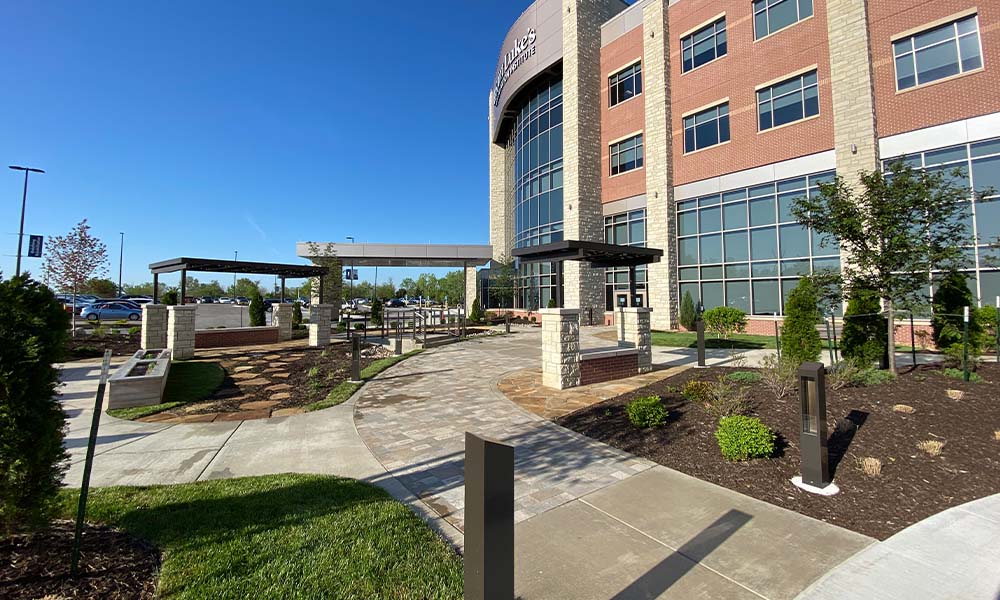Enhancing Civil Engineering Through Landscape Architecture

Landscape architecture enhances civil engineering projects by offering a different perspective on site design and combines the skillsets of artistry and ingenuity. Having both engineers and landscape architects working together results in more efficient discussion about how to best implement the desired features into a client’s project.
An engineer might look to solve these challenges in the most precise and pragmatic way. A landscape architect can look at the site design and offer innovative solutions with the freedom for exploration of elements. Nonetheless, when landscape architects work together with civil engineers to combine their expertise and skillsets, it results in enhancement of a site’s design and highlights additional external elements.
Working Better Together Through Communication
While landscape architecture and civil engineering firms are usually separate entities that coordinate through the project lead or architect, there are benefits to having both services together under one roof. The communication in projects is more efficient when they work side by side. The two disciplines have similar foundations and there are often overlaps between them. Collaboration helps both sides understand the design challenges the other discipline faces, with civil engineers learning more about implementing creative processes into design and landscape architects seeing firsthand the methodologies of engineering practices.
Where one design process ends, the other begins. An engineer’s system often sets the boundaries for the landscape design possibilities and with certain restrictions and codes in place, the two disciplines work to find ways to stay within the limitations. Found mixed within these two disciplines is normally the architect. The architect focuses on work specifically related to the building, civil engineers provide the infrastructure to make the building work and the landscape architect works to engage people in these two settings. It’s the landscape architect’s duty to play the key role in intersecting these two job roles.
Strengthening Communities
Landscape architecture provides outdoor spaces that enhance any type of development and encourages community engagement while promoting health and well-being. This in turn contributes to a city’s rich economic growth opportunities. Landscape architecture helps establish an identity by providing the community with a vibrant appearance. A project that addressed this holistic community approach was the Saint Luke’s Rehabilitation Center. The goal of this project was to provide a regional rehabilitation facility that previously was only found in certain cities. This network of Saint Luke’s Rehabilitation Centers connected parts of the Midwest which is helping to bring communities together.
Working on Saint Luke’s Rehabilitation Center was an opportunity to serve community members through designing a therapy garden to support the rehabilitation services that were taking place inside the establishment. Our landscape architects were given the opportunity to enhance the mission of Saint Luke’s by getting patients out in the environment. Providing a regional rehabilitation center with a quality landscape opportunity to engage and support people going through the program was a rewarding opportunity to supply a community with well-deserved amenities.
The therapy garden design coordinated with the civil engineering infrastructure to use stormwater management principles in their stormwater design. Landscape architects find solutions to slowing down water so that it can infiltrate properly and managing small rain events on site. Due to the wide variety of projects we’ve taken part in, coordination with stormwater management best practices is an area where BHC’s team excels because of the teams combined expertise.
Civil engineers provided a canvas for the landscape architect to integrate functional and sustainable design principles. The collaboration with civil engineering elements created infrastructure that is flexible enough to withstand a variety of natural forces. Collaboration like this contributes greatly to successful communities.
Organic Solutions to Civil Engineering Challenges
A changing set of circumstances has caused landscape architects to find new solutions to long awaited problems such as stormwater mitigation, resource management, climate change and community growth. Landscape architects are helping to minimize the effects these challenges have on the environment by creating accessible developments that connect communities by reducing carbon emissions from transportation. They focus on designing environments that are more energy efficient using water efficient designs, best construction practices and sustainable materials through resource management.
Each individual component contributes greatly to the overall success of a development. Both civil engineering and landscape architecture focus on improving community infrastructure, but landscape architecture often provides the knowledge on how to blend natural environments through cultivation and sustainable means. Because our landscape architects and civil engineers are working side by side, we have the ability to be a more flexible team. We can work through challenges that enhance future communities.
Even as challenges become more complex in nature, BHC’s collaboration allows our teams to work more efficiently to blend the natural environments with infrastructure to overcome any changing circumstances. When we work together, we find ways of providing the infrastructure to people in new and creative ways. Contact Ninah Butler – our in-house landscape architect for more information.
